
Topics
September 11, 2001–five years after the attacks many people are asking questions about what happened on that day in New York, Washington and Pennsylvania. Websites, articles, books and documentaries have put forward a variety of alternate theories to the government’s account of what happened. The most popular of these is a documentary called “Loose Change.” Now, a book dealing with many of these theories has just been published by the magazine Popular Mechanics, it’s called “Debunking 9/11 Myths: Why Conspiracy Theories Can’t Stand Up to the Facts.” In a Democracy Now! national broadcast exclusive, we host a debate between the filmmakers of Loose Change and the editors of Popular Mechanics on 9/11. [includes rush transcript]
We continue with our 9/11 coverage today on this fifth anniversary of the attacks. Last week we heard from New Yorkers * calling* on the federal government to stop ignoring the health effects of the attacks on the World Trade Center. A major new * study* of 9/11 finds that nearly seven out of every ten first responders at Ground Zero now suffer from chronic lung ailments. We also spoke with a * man* whose brother was killed at the World Trade Center and is now spearheading a movement against President Bush’s war on terror. And we looked at September 11th 100 years ago, when Gandhi launched * Satyagraha*, the modern non-violent resistance movement that continues to this day.
Today, a debate about 9/11. Ever since the attacks took place, many people across the country have raised a number of questions about what actually happened on that day in New York, Washington and Pennsylvania. Websites, articles, books and documentaries have put forward a variety of alternate theories to the government’s account of what happened.
The most popular of these is a documentary called * “Loose Change.”* The 80-minute film first appeared on the web in April 2005. Since then, it has had at least 10 million viewings and is described by Vanity Fair as “the first Internet blockbuster.” As the popularity of “Loose Change” has soared, a book dealing with the questions it and others have raised about 9/11 has been published. It’s called * “Debunking 9/11 Myths: Why Conspiracy Theories Can’t Stand Up to the Facts”* put together by the editors of the magazine, Popular Mechanics.
Today, we talk about some of the 9/11 theories and the arguments against them.
- Dylan Avery, writer and director of “Loose Change.”
- Jason Bermas, researcher for “Loose Change.”
- James Meigs, editor-in-chief of Popular Mechanics. Part of the editorial team that produced “Debunking 9/11 Myths: Why Conspiracy Theories Can’t Stand Up to the Facts.”
- David Dunbar, executive editor of Popular Mechanics. Part of the editorial team that produced “Debunking 9/11 Myths: Why Conspiracy Theories Can’t Stand Up to the Facts.”
Transcript
AMY GOODMAN: Today, we bring you a national exclusive: a debate about 9/11. Ever since the attacks took place, many people across the country have raised a number of questions about what actually happened on that day in New York, Washington and Pennsylvania. Websites, articles, books and documentaries have put forward a variety of alternate theories to the government’s account of what happened. The most popular of these is a documentary called Loose Change. The 80-minute film first appeared on the web April 2005. Since then, it’s had at least 10 million viewings and is described by Vanity Fair as “the first internet blockbuster.”
As the popularity of Loose Change has soared, a book dealing with the questions it and others have raised about 9/11 has been published. It’s called Debunking 9/11 Myths: Why Conspiracy Theories Can’t Stand Up to the Facts. It’s put together by the editors of the magazine Popular Mechanics.
So today, we’ll talk about some of the theories and the arguments against them. We’re joined in our studio by the filmmakers of Loose Change. Dylan Avery is the writer and director of the film and Jason Bermas is the film’s researcher. From Popular Mechanics, we’re joined by David Dunbar, the executive editor of the magazine. He led the editorial team that produced Debunking 9/11 Myths. James Meigs is also with us, the magazine’s editor-in-chief. Before we go to all of them, let’s go to a clip of Loose Change that deals with the attacks on the Pentagon on 9/11.
NARRATOR: 10:06 a.m., Shanksville, Pennsylvania. Flight 93 was en route from Newark, New Jersey to California with 45 passengers when it went off course at 8:56 over northeastern Ohio. According to the official story, Flight 93 was en route to Washington, D.C., when it was overpowered by a group of passengers and crashed into an abandoned strip mine in Shanksville, Pennsylvania. Out of all the events of 9/11, the one that has caused the most confusion is Flight 93: it was shot down/it wasn’t shot down. However, evidence suggests that perhaps Flight 93 was nowhere near Shanksville.
FOX NEWS REPORTER: I wanna get quickly to Chris Chaniki. He’s a photographer with the Pittsburgh affiliate, a FOX affiliate. He was back there just a couple of minutes ago. And Chris, I’ve seen the pictures. It looks like there’s nothing there, except for a hole in the ground.
CHRIS CHANIKI: Basically that’s right. The only thing you could see from where we were was a big gouge in the earth and some broken trees. You could see some people working, walking around in the area. But from where we could see, there wasn’t much left.
FOX NEWS REPORTER: Any large pieces of debris at all?
CHRIS CHANIKI: No. There was nothing, nothing that you could distinguish that a plane had crashed there.
FOX NEWS REPORTER: Smoke, fire?
CHRIS CHANIKI: Nothing. It was absolutely quiet. It was actually very quiet. Nothing going on down there. No smoke, no fire, just a couple of people walking around. They looked like part of the NTSB crew, walking around looking at the pieces.
FOX NEWS REPORTER: How big would you say that hole was?
CHRIS CHANIKI: From my estimates, I would guess it was probably about 20 to 15 feet long and probably about ten feet wide.
FOX NEWS REPORTER: What could you see on the ground, if anything, other than dirt and ash?
CHRIS CHANIKI: You couldn’t see anything. You could just see dirt, ash and people walking around.
NARRATOR: Wally Miller, a Somerset County coroner: “It looked like somebody just dropped a bunch of metal out of the sky.” In the Washington Post: “It looked like someone took a scrap truck, dug a ten-foot ditch and dumped trash into it. And as for the passengers: “I stopped being coroner after about 20 minutes, because there were no bodies there.” In the Pittsburgh Review: “I have not to this day seen a single drop of blood, not a drop.” It would seem that on one day, for the second time in history, an entire plane along with its passengers disappeared upon impact.
AMY GOODMAN: An excerpt of Loose Change. We’ll talk with the filmmakers, as well as the editors of Popular Mechanics, when we come back from break, and then we’ll take on the issue of what happened in Washington, the question of what hit the Pentagon. Stay with us.
[break]
AMY GOODMAN: As we take on the issue of what happened on September 11th, 2001, our guests are Dylan Avery, writer and director of Loose Change; Jason Bermas, researcher for the film; James Meigs is also with us, editor-in-chief of Popular Mechanics; and David Dunbar, executive editor of Popular Mechanics, who led the editorial team that produced the book, Debunking 9/11 Myths. Jim Meigs, you’re the editor-in-chief of Popular Mechanics; your response to this excerpt of Loose Change about what happened in Shanksville?
JAMES MEIGS: You know, that clip is really interesting, because it shows how slickly made this film is, how compelling it is at asking a series of sort of hanging questions and putting some spooky music behind it and making it sound as if someone’s covering up these facts. But a brave researcher can dig down and put all the pieces together. In fact, there’s answers to all those questions.
If you look at the sources that were used throughout that clip, they’re all things that came up in the first day or two after the attacks. In some cases, somebody is standing across the field and saying, “I don’t see a plane.” Well, when a plane strikes the ground at 500 miles an hour, flying almost straight down, there typically isn’t much visible above ground.
They also quote the coroner in the Shanksville area. We talked to the coroner. He had the horrific job of collecting the body parts and cataloging and performing all the necessary tests. Those bodies were identified. The plane wreckage in the pieces — the tiny pieces it was in after it had hit the ground was, you know, collected from the hole, cataloged.
And the black box was recovered. And we know what went on, because of the records of the voice cockpit recorder, and in this case, quite a few phone calls from the aircraft itself to various people on the ground. So we know a lot of what happened on Flight 93.
The film is alleging that no plane crashed there at all. The people were sent off somewhere to somehow be disposed of. If you are going to allege something so far beyond what a huge body of evidence would suggest is the truth, then you do need to pull together some evidence. And so, we fully support asking questions and being skeptical, but if you’re going to ask questions, you also have to look for the answers. And when you get answers, you can’t ignore them.
AMY GOODMAN: James Bermas of Loose Change — Jason Bermas.
JASON BERMAS: I’d just like to thank you for the opportunity to take on the government’s lies and Popular Mechanics, which is a Hearst yellow journalism publication’s lies, as well. And I would just say, look for yourself. This is an open field, and for the first time in history, we have a crater and no plane there. Look at any other plane crash, and you’ll find a tail section, a wing section. There were reports that this actually was strewn out over eight miles, and we have videotape of smaller pieces of debris. The coroner speaks for himself. We have the Pittsburgh Gazette, the editor-in-chief there, saying, again, there’s nothing there that looks like a plane.
Again, don’t believe us. Go to seeloosechange.com right now and watch for free. But take a look. All those people — you would normally have NTSB people in blue jackets to get the plane parts and put them back together. That’s what happened with TWA-800 that was in the ocean. And you don’t have that. You have people in hazmat uniforms. Why? So all’s we’re saying is, look, there’s no plane in this open field at all. There’s a ten-foot crater by 16-foot, and there’s just smoke there. So where is this plane? That’s all we’re saying.
AMY GOODMAN: What about what the coroner said, collecting body parts?
JASON BERMAS: Well, he’s never addressed us. And if you look at all of his media accounts in the days after, when he was first asked, again, he said there were no body parts, and to this day he has not seen a single drop of blood. So, again, I would say that’s more reliable than, you know, four years after the fact being contacted.
JAMES MEIGS: Did you talk to him?
JASON BERMAS: He won’t address us. Basically we have had people contact him, and he hangs up on us.
JAMES MEIGS: I find typically when we investigate these things, it’s very easy to find public records, to find the reports from all the various agencies that have investigated these accidents. The transcripts of the voice cockpit recorder have been released. In many cases, again, the sources, Jason, those are — newspaper articles are written day of, day after, a couple of days after.
DYLAN AVERY: No, one of them was a year after the fact.
JAMES MEIGS: Perhaps.
DYLAN AVERY: No, it was.
JAMES MEIGS: You know what it was like on those days, and you know how chaotic it was. You know how much misinformation typically comes out in the early hours of a major news event. Over time, with further research and good reporting, you can sift through those things, and you can make progress and get into the truth. Typically, what we see on conspiracy websites is citations that go back to the earliest moments, when the least information was available, and virtually no reference to the voluminous research which was done to follow up.
AMY GOODMAN: Dylan, what about the issue of cell phones?
DYLAN AVERY: The issue of cell phones is that for a majority of Flight 93’s flight, it was flying over cruising altitude, and a number of these — now, a majority of the phone calls were coming from air phones. But the cell phone calls were coming from cruising altitude. Now, it is pretty much impossible in 2001 to sustain an extended conversation over a cell phone at cruising altitude from a commercial airliner. But, I mean, that’s not our strongest evidence. I mean, that’s just one of the many things about that day that don’t add up to us.
And we haven’t gotten to hear the cockpit voice recorder. We haven’t gotten to hear any of these alleged phone calls. I mean, the government is cherry-picking the evidence that it releases to the government. And I feel that if our government was truly attacked by surprise and we had absolutely no inclination of the attacks, they would not be so reticent to release the 84 videos from the Pentagon, the cockpit voice recorder of Flight 93. The list of things that the government is holding from us goes on.
AMY GOODMAN: David Dunbar.
DAVID DUNBAR: With regard to the cell phones, we did what any reporter would do. We talked to experts in the field. And, in fact, cell phones do work at that altitude, up to 35,000 feet and higher. And —
DYLAN AVERY: In 2001?
DAVID DUNBAR: In 2001, and it might be instructive for you to talk to some of the cell phone experts. There are a lot of dropped calls, because the plane is moving at high-speed and the hand-off sometimes get dropped. That’s true, and we know from the public record that, in fact, a lot of the cell phone calls were cut off. And most of the phone calls were made from the air phones. But nevertheless, talk to the experts, and you’ll find out that you can make a cell phone call from a commercial plane.
JASON BERMAS: If I may address that for one moment? If that’s true, then why in 2004 did American Airlines spend tens of thousands of dollars to put cell phone towers in their planes so people could make those calls? Why spend tens of thousands of dollars three years after the fact, if they worked so well on September 11? What he’s saying is a total lie.
AMY GOODMAN: James Meigs.
JAMES MEIGS: We didn’t say they worked well. We said they worked. And if you look at the record, many of the calls were dropped, they were incomplete, but especially over rural areas. You know, if you think about a cell phone tower, it can cover a couple hundred square miles. That coverage area goes up into the sky, as well as horizontally across the ground.
DYLAN AVERY: Actually, they’re designed to point downward.
JAMES MEIGS: The reason that they’ve improved the system was to avoid the dropped calls and to isolate the cell phone transmissions from any possible interference with the avionics.
AMY GOODMAN: Well, we’re not going to cover any issue comprehensively. We have a lot of issues to cover, and I’d like to turn now to an excerpt —
DYLAN AVERY: Yeah, the cell phone is a weak argument.
AMY GOODMAN: Why do you say that?
DYLAN AVERY: I mean, it’s not our best evidence. I mean, there’s tons of things you can discuss besides the cell phone.
JASON BERMAS: Just the fact the plane is not there, I think, is our best evidence, and anyone can see that.
AMY GOODMAN: Let’s turn to the Pentagon right now, in the excerpt of Loose Change that deals with the attack on the Pentagon.
JAMIE McINTYRE, Sr. Pentagon Correspondent: It might have appeared that way, but from my close-up inspection, there’s no evidence of a plane having crashed anywhere near the Pentagon. The only site is the actual site of the building that’s crashed in. And as I said, the only pieces left that you can see are small enough that you can pick up in your hand. There are no large tail sections, wing sections, fuselage, nothing like that anywhere around, which would indicate that the entire plane crashed into the side of the Pentagon.
NARRATOR: The official explanation is that the intense heat from the jet fuel vaporized the entire plane. Indeed, from these pictures it seems that there’s absolutely no trace of a fully loaded Boeing 757. But if the fire was hot enough to incinerate a jumbo jet, then how could investigators identify 184 out of 189 people found at the Pentagon. The Armed Forces DNA identification laboratory, which was responsible for the task, was also responsible for identifying the dead in Shanksville. Keep that in mind for later.
So what is a Boeing 757 made of? The exact details are not public knowledge. But what we do know is that Flight 77 had two Rolls Royce RB211 engines, made of steel and titanium alloy, which are nine feet in diameter, 12 feet long and weigh six tons each. Titanium has a melting point of 1,688 degrees Celsius. Jet fuel is a hydrocarbon, which can maintain a constant temperature of 1,120 degrees Celsius after 40 minutes, but only if the fuel source is maintained. The fuel would have burned off immediately upon impact. Therefore, it is scientifically impossible that 12 tons of steel and titanium was vaporized by jet fuel.
AMY GOODMAN: Dylan Avery, the narrator and filmmaker of Loose Change, a film that is getting tremendous attention. Millions of people have downloaded it. Dylan and Jason are here in New York in this weekend of the anniversary giving out thousands of copies of the film. The issue of the Pentagon, David Dunbar, executive editor of Popular Mechanics?
DAVID DUNBAR: Well, the clip starts with a red herring, claiming that experts say the plane was vaporized, which is untrue. And in addition, in our book and I believe even in the film, there is evidence of debris on the lawn of the Pentagon. There’s plenty of debris that’s been found inside the building. There were — the largest chunk was probably the landing gear that punched through the C-ring to make that 16-foot exit hole. So there’s plenty of physical evidence, including the flight data recorder and forensics that were done, that there was a 757 that struck the Pentagon. And I’m still waiting, after five years, to see any physical evidence of any kind that would indicate that it was a missile or anything else that hit the Pentagon.
AMY GOODMAN: Dylan Avery.
DYLAN AVERY: Well, I mean, we’ve been waiting five years to see clear video of what actually happened at the Pentagon. And you guys are coming on and saying that you’re experts on the fact, when nobody has seen what has happened. You guys claim to have seen photographs that have been released just to you. And I want to know why those haven’t been released to the public.
AMY GOODMAN: What photographs have you seen?
DAVID DUNBAR: Can I add a point about that? I am not coming on this show and presenting myself as an expert in metallurgy or structural engineering. I’m coming on the show as the editor of this book. And what do we do? We do what you would do, Amy, or any other journalist would do. We talk to people who are experts in the field. And that’s what we did with this book in order to debunk these 9/11 myths. I highly recommend it for documentary filmmakers or anybody else who wants to look at the data. That’s what we did. We talked to people who were there at the scene. We talked to structural engineers. We talked to aviation crash experts.
AMY GOODMAN: Jason Berman.
JASON BERMAS: Ms. Goodman, I’d just like to address the fact that they have claimed that they have 84 videos through a FOIA request pertaining to what did strike the Pentagon. But the bottom line is, nothing should have struck the Pentagon. We know through the 9/11 Commission testimony that Norman Mineta, the head of the Transportation Department, was in a bunker with Cheney prior to the Pentagon strike. Now, this is the only three-and-a-half minutes out of the hundreds of hours that’s been censored by C-SPAN. Why? Because he says he’s in a bunker with Cheney, and an aide walks in and says, “Sir, the plane is 50 miles out. Sir, the plane is 30 miles out. Do the orders still stand?” Cheney snaps his head around and says, “Of course, the orders still stand.”
By the time it was ten miles out, it was too late, and the Pentagon was struck. That is a direct stand down order. And if you listen to the NORAD tapes, later on some of these people are actually tracking these planes, asking to shoot them down, and they’re getting a negative shoot-down order. Why is that significant? Well, in June of 2001, Cheney signs a DOD memo putting shoot-down orders in his hands, Rumsfeld’ hands and Bush’s hands alone, where it was standard operating procedure if colonels were to intercept these planes and they saw a threat, they could do the shoot-down order.
JAMES MEIGS: Let’s back up a little bit.
AMY GOODMAN: Jim Meigs of Popular Mechanics.
JAMES MEIGS: We started talking about physical evidence for an aircraft hitting the Pentagon, that an aircraft was seen by hundreds of people, eyewitnesses. The wreckage was removed from the Pentagon. The bodies were removed from the Pentagon and identified. None of those people have materialized to explain that this was a conspiracy.
We’re not a political magazine. We’re about facts. We’re about what happens when airplanes crash, how buildings are built, and so we’re not going back to conspiracies that might have been hatched, you know, during the Kennedy administration or other eras, but we are looking for physical evidence, positive evidence for any of these claims. Every time we get into detail on one, they fall apart.
The stand-down order is a good example. If you look at the NORAD tapes — and Vanity Fair, the same magazine that did a very laudatory story on you guys, has a story in their current issue that includes these tapes. And what you see is it was total chaos that day. Nobody knew where the planes were. It was complete disorganization, and the protocol for how to handle a commercial aircraft that was off course was a complete mess. And, in fact, I think on September 10th, 2001, most of us would have been horrified to think that the minute a commercial aircraft goes off course there would be an F-16 on our trail with sidewinder missiles. That was not a country, I think, many of us would want to live in.
AMY GOODMAN: Jason Bermas
JASON BERMAS: What Mr. Meigs doesn’t want to address is that that article clearly states that the same kind of thing were happening in the drills as what was happening on September 11th. You have comments like, “I’ve never seen so much real world stuff,” during an exercise. You have somebody following Flight 11 for 20 minutes after it’s hit the World Trade Center, and then you have Cynthia McKinney twice asking for reports on these drills, the last time in a 2005 Department of Defense budget thing from Myers and Rumsfeld, and she never gets it. And she asked them, “Well, do these war games help or hurt us?” And Richard Myers actually said, “They helped our response on 9/11,” which is total nonsense.
We know at 8:45 in the morning, the CIA at the NRO building is running a drill of ramming a plane into a building. We know that FEMA was here the night before in New York City for a bio-terror drill. We also know the FAA is running drills of 20-plus hijacked jets going in and out of radar at the same exact time these four hijackings are happening. That’s what he doesn’t want to tell you.
DYLAN AVERY: I also want to jump in. We still have not seen any pictures of two RB211 engines, the tail section, any of that. We have not seen any significant parts of debris. And I would like to know what sources you have that the landing gear created that punch-out hole, because I have heard completely different responses. I heard the fuselage is what caused that hole.
JAMES MEIGS: There’s a photo of it.
DYLAN AVERY: There’s a photo of the landing gear causing that 16-foot hole?
JAMES MEIGS: There’s — you know, one of the things that you can do, the Pentagon and a number of other engineering organizations did intensive studies of what happened at the building. The building is a reinforced concrete building. The aircraft was shredded into relatively small pieces. The heavier — some of the heavier components traveled farther, including the landing gear. You don’t find an intact tail section when a large commercial aircraft hits a reinforced concrete building at 500 miles an hour. This is not a movie.
AMY GOODMAN: I do want to go to another clip of the movie, though, of the film. I want to turn to Loose Change, the part that does deal with the damage to the Pentagon. It begins with a clip of CNN’s coverage on 9/11.
NARRATOR: These photos were taken before the roof of the outer ring had collapsed. The only visible damage to the outer wall is a single hole no more than 16 feet in diameter. A Boeing 757 is 155 feet long, 44 feet high, has 124-foot wingspan and weighs almost 100 tons. Are we supposed to believe that it disappeared into this hole without leaving any wreckage on the outside? Why is there no damage from where the wings or the vertical stabilizer or the engines would have slammed into the building?
Remember how big the engines were? If six tons of steel and titanium slammed into the Pentagon at 530 miles per hour, they would bury themselves inside the building leaving two very distinct imprints. And yet the only damage to the outer wall is this single hole with no damage from where the engines would have hit. Why are the windows next to the hole completely intact? Why are the cable spools in front of the hole unmoved?
As to the inside of the Pentagon, there’s another hole approximately 16 feet in diameter found on the other side of the C-ring, three rings from the impact? For that hole to have been caused by Flight 77, the Boeing would have had to smash through nine feet of steel-reinforced concrete, traveling 310 feet. The nose of a commercial airliner is composed of lightweight carbon. This is what usually happens to the nose of a commercial airliner in a plane crash. If the nose caused this hole, where is the rest of the debris from the plane? So, what could blow a 16-foot hole on the outer ring of the Pentagon, smash through three rings, nine feet of steel-reinforced concrete and leave another 16-foot hole? A 757? Or a cruise missile?
AMY GOODMAN: An excerpt of Loose Change. David Dunbar, executive editor of Popular Mechanics, your response?
DAVID DUNBAR: We just looked at the physical evidence, and when the filmmakers can present some evidence of a cruise missile striking the Pentagon, we’ll be happy to look at it and evaluate it and talk to our experts. Just rolling the tape back a bit, the angle that the film shows of the facade of the Pentagon before it collapsed is a misleading picture. That gash in the E-ring was about 90 feet across.
DYLAN AVERY: No, it was not.
DAVID DUNBAR: The wingspan of the plane was about 124 and change, not loose change, but that punched the hole into the building. And then the landing gear was more dense and heavier and continued on through a forest of columns to smash that exit ring. So when you see that nice round hole, that’s the exit ring in — that’s the exit hole in the C-ring punched by the landing gear. And Purdue University did a massive computer reenactment of the crash and the aftermath, and they worked with the American Society of Civil Engineers to preparation of their report, and it’s conclusive that the plane did strike the Pentagon.
AMY GOODMAN: Dylan Avery.
DYLAN AVERY: The initial impact on the Pentagon was no more than 20 feet wide, and if you are telling me that initial round impact hole in the facade of the Pentagon is 90 feet, then you’re telling me that the two windows above it are 30 feet across.
DAVID DUNBAR: And incidentally, about the windows, I’m glad you mentioned that. Those were recently replaced in the Pentagon as part of a whole renovation program designed specifically to be blast resistant after the explosions at the American embassies in East Africa.
DYLAN AVERY: I find it very convenient that Hani Hanjour decided to choose that one particular section of the Pentagon to hit, when he could have just dove straight right into the front door.
DAVID DUNBAR: In the world of paranoid conspiracy theories —
DYLAN AVERY: You’re not addressing the evidence.
DAVID DUNBAR: —there are no coincidences.
DYLAN AVERY: You’re not addressing the evidence.
JASON BERMAS: I would just like to say this.
AMY GOODMAN: Jason Bermas.
JASON BERMAS: The first official version was this thing bounced off the lawn and hit it, and it would appear that it would have to, because it’s such a low-level hit. Okay, it didn’t bounce off the lawn, because there’s no scratches on the lawn. On top of that, we actually interviewed the first person on the scene before the collapse, and he was on the lawn taking video of it for twelve minutes. His name is Bob Pugh, and it is no more than a 16- to 20-foot hole. And we actually have one of the survivors who crawled out of that hole and said she saw no plane debris. Her name is April Gallup. Explain to me how a woman can come through a hole where a 757 has just impacted the building.
AMY GOODMAN: Ten seconds, Jim Meigs.
JAMES MEIGS: Yeah. We didn’t fact check every detail of Loose Change, but what we did do was look at the broad cross-section of conspiracy theories. There are photographs of the plane in the building of wreckage wrapped around reinforced concrete columns, and there is a map of the path of destruction that plane tore through that area.
AMY GOODMAN: We’re going to go a break. We want to get to the World Trade Center. We are talking with the editors of Popular Mechanics and the filmmakers who made the film Loose Change. Stay with us.
[break]
AMY GOODMAN: We turn now to another theory put forward by the film Loose Change, is that the fire caused by the airplane crashes wasn’t actually hot enough to melt steel and cause the Twin Towers at the World Trade Center to collapse.
NARRATOR: Hyman Brown, civil engineering professor and the World Trade Center’s construction manager: “It was over-designed to withstand almost anything, including hurricanes, high winds, bombings and an airplane hitting it. Although the buildings were designed to withstand 150-year storm and the impact of a Boeing 707, jet fuel burning at 2,000 degrees Fahrenheit weakened the steel.”
Kevin Ryan, Underwriters Laboratories in a letter to Frank Gayle of the National Institute of Standards and Technology: “We know that the steel components were certified to ASTM E119. The time temperature curves for this standard require the samples to be exposed to temperatures around 2,000 degrees Fahrenheit for several hours. And as we all agree, the steel applied met those specifications. Additionally, I think we can all agree that even unfireproof steel will not melt until reaching red-hot temperatures of nearly 3,000 degrees Fahrenheit. Why Dr. Brown would imply that 2,000 degrees Fahrenheit would melt the high-grade steel used in those buildings makes no sense at all. This story just does not add up. If steel from those buildings did soften or melt, I’m sure we can all agree, that this was certainly not due to jet fuel fires of any kind, let alone the briefly burning fires in those towers.”
Ryan’s statements directly contradict statements from other experts claiming that 2,000-degree heat inside the World Trade Center caused the towers to collapse. As such, days after writing this letter, Kevin Ryan was fired from his position. Not even the experts agree with each other. So what else could have caused the Twin Towers and Building Seven to collapse?
PETER JENNINGS: 10:00 Eastern Time this morning, just collapsing on itself…
DON DAHLER: The second building that was hit by the plane has just completely collapsed.
PETER JENNINGS: We have no idea what caused this.
CNN ANCHOR: Almost looks like one of those planned implosions.
CHANNEL 8 REPORTER: As if a demolition team set off, when you see the old demolitions of these old buildings. It folded down on itself and it is not there anymore.
PETER JENNINGS: If you wish to bring — anybody who has ever watched a building being demolished on purpose knows that if you are going to do this, you have to get at the under-infrastructure of a building and bring it down.
WITNESS: We heard another explosion, and I’m assuming that’s the one that came from the lower level, since there were two.
INTERVIEWER: Right, because it was like 18 minutes apart.
WITNESS: Well, this is — no, the first explosion. Then there was a second explosion in the same building. There were two explosions.
INTERVIEWER: Okay.
WITNESS 2: Federal agencies that were down there do believe that there was some sort of explosive device somewhere else besides the planes hitting.
NBC ANCHOR: NBC’s Pat Dawson is close to the scene of that attack. Pat?
PAT DAWSON: Just moments ago, I spoke to the Chief of Safety for the New York City Fire Department. The chief, Albert Turi, he received word of the possibility of a secondary device, that is, another bomb going off. He tried to get his men out as quickly as he could. But he said that there was another explosion, which took place. And then an hour after the first hit here, the first crash that took place, he said there was another explosion that took place in one of the towers here. He thinks that there were actually devices that were planted in the building. The second device, he thinks, he speculates, was probably planted in the building.
AMY GOODMAN: An excerpt of the film Loose Change. And as we broadcast today at this time in the live broadcast, it’s the time of the first plane hitting the first tower of the World Trade Center. Jim Meigs, the editor-in-chief of Popular Mechanics, your response to this aspect in Loose Change?
JAMES MEIGS: Yeah, well, that clip is interesting. It’s built largely around the testimony of a guy named Kevin Ryan from Underwriters Laboratories. In fact, it turns out his expertise was testing water. He wasn’t involved in steel at all. This fact has been widely known, and yet for quite some time — and even a lot of other conspiracy theorists have backed away from that, and yet it’s in the film. And it looks so convincing when you see it, if you don’t take the time to go back and do the background research. And if you notice, so many of the clips in that section come from the day of, the day after.
And it ends — or along the way, don’t they say something like, even the experts don’t agree? In fact, the experts do agree. The collapse of the World Trade Center is the most intensively studied engineering failure in world history, and thousands of pages of reports, experts, some affiliated with various branches of government, major engineering schools, there’s no indication in any of that work to support any of these ideas of demolition or anything like that. And the things that are cited tend to be the experts who on close investigation turn out to have no expertise or first impressions of people on the scene who, of course, heard all kinds of horrible noises and confusing, terrible things in the chaos of that day.
AMY GOODMAN: Jason Bermas.
DYLAN AVERY: Well, real quick, I just want to jump in and say, Kevin Ryan has been open about his statement. He has always been public about the fact that he worked for the — I don’t remember the exact name, but it was a subdivision of Underwriters Laboratories, which did water testing. But it was the fact that he got the higher-up from — he got the word from his higher-ups that they actually had certified the steel and, I mean, his science still adds up.
DAVID DUNBAR: In fact, Underwriter Laboratories does not certify structural steel.
DYLAN AVERY: Oh, okay.
JASON BERMAS: I would disagree with that. But aside from the hundreds of witnesses’ accounts of bombs going off in the building, I would just like to go to the official version. They are saying that the intense heat from the impact holes was so intense that it weakened the steel, causing it to do a pancake collapse on top of itself. This is simply a lie. We know two minutes before the first building, which was struck second and burned for less time, we had firefighters in the impact zone saying that they could knock down the fires with two lines, two hand lines. Now, I ask you, can human beings stand in 1,500-degree temperature, 1,200-degree temperature, 600-degree temperature? The answer is: no, they cannot.
JAMES MEIGS: Jason, I think it’s telling that every time you disagree with something you call the people a liar.
JASON BERMAS: I’m not calling anybody a liar, sir. I’m calling you a liar, because you are a liar. These people were not lying. They knew they could knock down this fire. They radioed down. They said they could knock it down with two hand lines and literally less than two minutes later, the building imploded on itself. And what you won’t see in the clip there, but you can see at seeloosechange.com, again, for free, are the isolated blast points, 20, 40, and 60 floors below the supposed pancake collapse. And these are blast points. These are not pressure coming from air. And doubt me, because if you watch the first plane hitting the building, the only video of it, you actually see one of these blast points go off 20 stories above that impact, and they try to say that the building is blown out on the bottom level, first floor, right? First of all, the World Trade Center goes into the Port Authority. So why did it go 1,300 feet down the elevator shafts, explode —- decide to explode in the bottom level, leave no fire marks. I mean, it literally knocked off 15-foot panels -—
DYLAN AVERY: I would also —
JASON BERMAS: — of marble and left no burn marks. Marble, when you put fire on it, begins to turn yellow and brown rapidly. Look at the video evidence.
AMY GOODMAN: Dylan Avery?
DYLAN AVERY: I would just like to quickly jump in and ask what your guys’ explanation is for Willie Rodriguez’s testimony that he heard, experienced, and his co-workers were actually burned, by an explosion in the basement of the North Tower, prior to the plane hitting? And this has been verified by at least twenty different eyewitnesses.
AMY GOODMAN: Jim Meigs, of Popular Mechanics.
JAMES MEIGS: The — when the planes struck the buildings, they penetrated the internal core. Jet fuel poured down stairwells and elevator shafts, setting off secondary explosions, not to mention the horrific impact of these fully loaded planes hitting the structure and causing enormous swaying.
DYLAN AVERY: Mr. Meigs —
JAMES MEIGS: Give me a second to finish, Dylan. It’s interesting, in that testimony, he says that somebody came out of the elevator area with his skin hanging off. That would be consistent with a fire, not an explosion. And you had a short clip of Naudet brothers’ documentary about that day and of them entering the lobby, but what you didn’t have was their voiceover, where they say they saw humans on fire, which again would be completely consistent with what we saw in all the reports on this, that jet fuel came down the elevator shafts. People died. We’re talking about real human beings here, you know. This wasn’t a movie. This isn’t a parlor game.
JASON BERMAS: We are talking about real human beings —
DYLAN AVERY: Bermas, Bermas, relax for a second.
JASON BERMAS: — and we respect them with the truth, sir.
DYLAN AVERY: Relax for a second.
DAVID DUNBAR: It’s interesting to note, too, that —
DYLAN AVERY: But you still didn’t address the fact that it was before.
DAVID DUNBAR: — conspiracy theorists sometimes cite the Empire State Building crash back in 1945: that building’s still standing, why are the Twin Towers down? But what’s interesting about that 1945 crash — it was a much smaller plane going at a much lower speed — it had similarities in terms of the fuel pouring down the elevator shafts and stairwells and, in fact, igniting fires in the lobby of the Empire State Building.
JASON BERMAS: Sir, hold on. True or false: the claim is that this fuel knocked the fireproofing off all the steel, correct? That’s the claim?
DAVID DUNBAR: No, nobody’s claiming it knocked it off all the steel. It knocked it off approximately 60,000 square feet.
JASON BERMAS: Well, that’s false.
JAMES MEIGS: The impact, the impact.
DAVID DUNBAR: The impact. The impact of the plane.
JASON BERMAS: Another lie.
DAVID DUNBAR: [inaudible] through the impact [inaudible].
AMY GOODMAN: Now, we only have a few minutes, and I want to get to Building Seven. Dylan Avery what is your thesis of what happened to Building Seven?
DYLAN AVERY: Sure. Well, basically, which is — this is one thing that a lot of people don’t know about September 11th, myself included, until I started doing the research. At 5:20 p.m. on September 11th, World Trade Center Building Seven — it was a 47-story steel-frame skyscraper 300 feet to the north of the North Tower — at 5:20 p.m. this building collapses in under seven seconds completely into its own footprint into a debris pile about six or seven stories high. Now, it wasn’t hit by a plane. It was hit by debris from the North Tower when it fell. But, if you look at all the buildings surrounding the World Trade Center, and if you actually look at Building Five, which is right underneath both the Twin Towers, that building is engulfed in flames for hours after Building Seven even collapses.
So, we have all the buildings surrounding the Twin Towers heavily engulfed with debris, some engulfed in flames. We have World Trade Center Building Seven, which has isolated fires on floor seven and twelve. It has smoke coming from its south face, and these guys claim that 25% of the building was scooped out. Even if 25% of the bottom of the building was scooped out, that still does not account for the building falling in perfect freefall into —
AMY GOODMAN: And your thesis about what happened? What do you believe?
DYLAN AVERY: It would have had to have been a controlled demolition. That’s the only way to prove — that’s the only way to explain what we saw with our own eyes, and any attempts to discredit that are just not scientifically sound.
JAMES MEIGS: You know, this is a wonderful example of how conspiracy theories work. Any time there’s a little bit of doubt, a little bit of area where we don’t know everything, then the answer immediately is, well, someone must have blown it up. It’s a form of argumentation that’s also used by creationists. If they can find one little gap in the evolutionary record, they say evolution’s a hoax. Or Holocaust deniers —
DYLAN AVERY: Mr. Meigs, with all do respect, these are two completely different things.
JAMES MEIGS: Holocaust denial works with very similar —
DYLAN AVERY: Oh, my God!
JASON BERMAS: Oh, man!
JAMES MEIGS: And, but what we see here is — one of our sources was Vincent Dunn, the retired deputy fire chief for the New York City Fire Department, who wrote the textbook, The Collapse of Burning Buildings. And what he explained is that the building was extremely unconventional. It had this giant Con Ed substation with enormous trusses carrying extraordinarily high loads, very vulnerable to fire and other kinds of damage. It was not a conventional skyscraper by a long shot. Those fires burned unfought for seven hours, fed by diesel tanks that were in the building to fuel backup generators. And when those trusses ultimately failed, the building did collapse in its own footprint. That’s what happens when a building’s internal supports fail.
AMY GOODMAN: We only have about one minute and we have to divide it. Can you respond to that point and make your larger point?
JASON BERMAS: Please let me respond to that.
DYLAN AVERY: Go ahead, Bermas.
JASON BERMAS: On top of everything he said, that’s where everybody rushed to for the local government, okay? We have somebody who was on the 23rd floor, okay, working with the local government, being escorted by fire fighters. He gets down to the eighth floor, huge explosion in Building Seven. Bomb goes off. Okay, this is his words, not mine: “Why are there explosives in Building Seven.” On top of that, there have been five different reasons why it fell. They’re trying to say generators, there was a big fuel tank, there’s a 20-story thing scooped out of the building, all of which is false, because they don’t know.
DYLAN AVERY: They keep changing their explanations for why the building fell.
JASON BERMAS: And I would say this, the 9/11 Commission Report actually has the nerve in a footnote to say that it collapsed in 18 seconds. Look for yourself and time it. It’s no more than 7 seconds.
AMY GOODMAN: And who do you believe blew up Building Seven?
DYLAN AVERY: We don’t want to try to implicate anybody. We’re just trying to tell people to go out and research for themselves. But, I mean, you have to ask yourself, who could have possibly placed explosives inside Word Trade Center Building Seven, secretly without anyone noticing, and especially the Twin Towers?
JASON BERMAS: Especially because the CIA, the DOD, the Secret Service are all located there.
DYLAN AVERY: Yeah, I mean, that building was a government hotspot.
AMY GOODMAN: Ten seconds, Jim Meigs.
JAMES MEIGS: You know, conspiracies have a way of constantly expanding. You just listed a whole range of government agencies. Apparently the fire fighters we talked to, we at Popular Mechanics, other journalists, our friend David Corn at The Nation is accused to being part of this massive cover-up. The fact is, there are always little details that don’t always add up until you finish your research.
DYLAN AVERY: Mr. Meigs, you’re still not addressing the evidence.
JAMES MEIGS: But when you really dig down, every single one of these has a clear explanation. And if there’s areas that don’t, let’s continue to dig. We should be skeptical. We should ask questions. By all means, we fully support the effort to get to the bottom of any remaining questions.
AMY GOODMAN: We’re going to have to leave it there. David Dunbar and Jim Meigs of Popular Mechanics, and Jason Bermas and Dylan Avery of Loose Change, I want to thank you all for being with us.


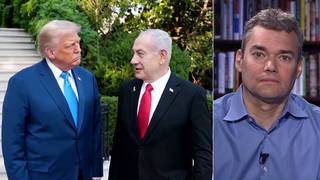
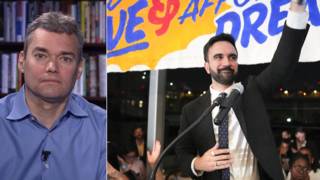
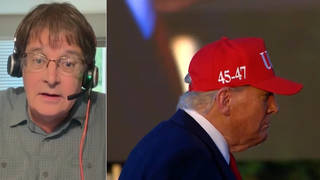
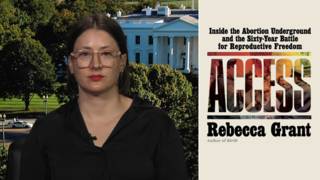

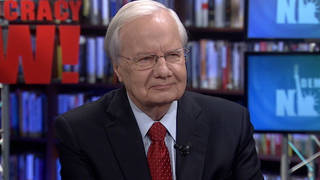
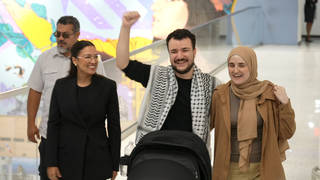

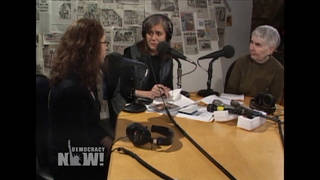

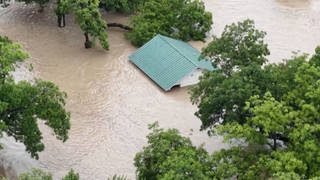
Media Options